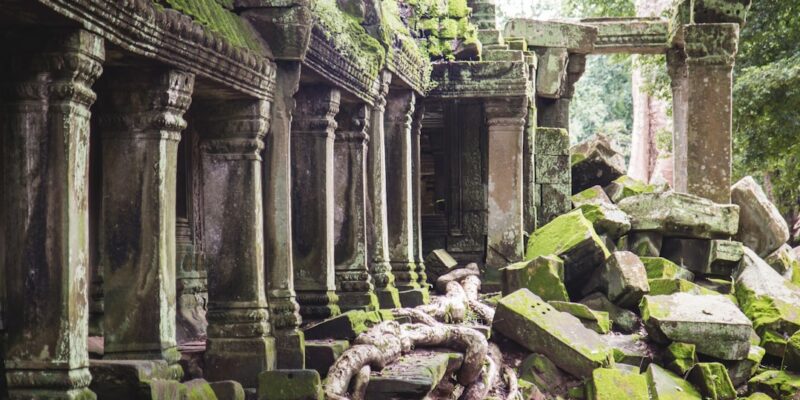
Exploring Petra’s Rich Cultural Sites in Jordan
Petra, located in southern Jordan, is a historical and cultural site of immense significance. Known as the “Rose City” due to the color of its stone, Petra was once the capital of the Nabatean Kingdom and served as a major trading hub for centuries. Today, it is recognized as a UNESCO World Heritage Site, attracting visitors from around the world who come to marvel at its stunning architecture and rich history.
The designation of Petra as a UNESCO World Heritage Site is a testament to its outstanding universal value. It is considered one of the most important archaeological sites in the world, showcasing the unique blend of Hellenistic and Eastern architectural styles. The site also provides valuable insights into the ancient Nabatean civilization and its role in the ancient trade routes.
Key Takeaways
- Petra is a UNESCO World Heritage Site, known for its unique architecture and history.
- The city was originally built by the Nabatean Kingdom and later conquered by the Roman Empire.
- Petra’s architecture is a blend of Hellenistic and Eastern styles, with intricate carvings and facades.
- The Treasury is one of Petra’s most iconic structures, with hidden chambers and a fascinating history.
- The Monastery offers a spiritual retreat and stunning panoramic views of the surrounding landscape.
The History of Petra: From Nabatean Kingdom to Roman Empire
Petra was founded by the Nabateans in the 4th century BC and quickly became a major center for trade and commerce. The Nabateans were skilled traders who controlled the lucrative trade routes that connected Arabia, Egypt, and Syria. They built an extensive network of water channels and cisterns to support their growing population and developed sophisticated agricultural techniques to cultivate crops in the arid desert environment.
Under Roman rule in the 1st century AD, Petra began to decline as trade routes shifted and new cities emerged. The city was eventually abandoned and forgotten by the outside world until it was rediscovered by Swiss explorer Johann Ludwig Burckhardt in 1812. Since then, ongoing archaeological excavations have revealed the extent of Petra’s grandeur and provided valuable insights into its history.
The Architecture of Petra: A Blend of Hellenistic and Eastern Styles
The architecture of Petra is a unique blend of Hellenistic and Eastern styles, reflecting the city’s position as a crossroads between different cultures. The Nabateans were skilled architects who carved their buildings directly into the rose-colored sandstone cliffs. The facades of these buildings were adorned with intricate carvings and decorative elements, showcasing the wealth and power of the Nabatean rulers.
The influence of Hellenistic culture can be seen in the grandeur and scale of the buildings, as well as in the use of architectural elements such as columns and pediments. However, the Nabateans also incorporated elements from their own Eastern traditions, such as the use of obelisks and decorative motifs inspired by nature.
The Treasury: Iconic Facade and Hidden Chambers
| Metrics | Values |
|---|---|
| Location | Petra, Jordan |
| Architectural Style | Hellenistic |
| Height | 39.1 meters (128 feet) |
| Width | 25.8 meters (84 feet) |
| Depth | 10.5 meters (34 feet) |
| Construction Period | 1st century BC – 1st century AD |
| Function | Funerary monument |
| Significance | One of the most elaborate temples in Petra and a symbol of Jordan’s cultural heritage |
The Treasury is perhaps the most iconic structure in Petra, with its elaborate facade carved into the sandstone cliff. The facade is adorned with intricate carvings depicting mythological figures, animals, and floral motifs. It is believed to have been built in the 1st century AD as a tomb for a Nabatean king.
Behind the facade of the Treasury, there are hidden chambers that were used for various purposes. Some chambers were used for storage, while others served as burial chambers for members of the royal family. The Treasury also contains a large central chamber that was likely used for religious ceremonies or gatherings.
The Monastery: A Spiritual Retreat with a Panoramic View
The Monastery is another impressive structure in Petra, located high up on a hilltop overlooking the city. It is larger than the Treasury and features a similar facade carved into the sandstone cliff. The Monastery is believed to have been built in the 1st century AD as a temple dedicated to a deified Nabatean king.
The Monastery is not actually a monastery in the traditional sense, but rather a place of worship and spiritual retreat. It offers visitors a panoramic view of Petra and its surrounding landscape, making it a popular spot for tourists to take in the breathtaking scenery.
The Great Temple: A Complex of Religious Structures
The Great Temple is a complex of religious structures located in the heart of Petra. It was built in the 1st century AD and served as the main religious center of the city. The complex includes a large courtyard, a monumental staircase, and several smaller temples and shrines.
The architecture of the Great Temple reflects a blend of Hellenistic and Eastern styles, with elements such as columns, pediments, and decorative carvings. The temple was dedicated to the Nabatean gods and was used for religious ceremonies and rituals.
The Royal Tombs: Final Resting Places of Nabatean Rulers
The Royal Tombs are a collection of impressive tombs carved into the cliffs of Petra. These tombs were the final resting places of the Nabatean rulers and their families. The tombs are characterized by their grand facades, which are adorned with intricate carvings and decorative elements.
The most famous tomb in the Royal Tombs complex is the Urn Tomb, named for the large urn-shaped structure on its facade. This tomb is believed to have been built in the 1st century AD and was likely used for multiple burials. Other notable tombs in the complex include the Silk Tomb, the Corinthian Tomb, and the Palace Tomb.
The Petra Museum: A Collection of Artifacts and Exhibits
The Petra Museum is located near the entrance to Petra and houses a collection of artifacts and exhibits that provide insights into the history and culture of the ancient city. The museum showcases a wide range of objects, including pottery, jewelry, statues, and architectural fragments.
The museum plays an important role in preserving Petra’s history and culture by providing a space for these artifacts to be displayed and studied. It also offers visitors an opportunity to learn more about Petra’s rich heritage before exploring the site itself.
The Siq: A Natural Gorge Leading to Petra’s Main Sites
The Siq is a narrow, winding gorge that serves as the main entrance to Petra. It is a natural wonder in its own right, with towering cliffs on either side and a winding path that leads visitors through its dramatic landscape. The Siq is believed to have been formed by tectonic activity millions of years ago.
The Siq played an important role in the defense of Petra, as it provided a natural barrier against invaders. It also served as a ceremonial entrance to the city, with statues and carvings lining its walls. Today, the Siq is one of the most popular attractions in Petra, offering visitors a unique and awe-inspiring approach to the ancient city.
Exploring Petra: Tips and Recommendations for Visitors
When visiting Petra, it is important to plan your visit carefully to make the most of your time at the site. It is recommended to arrive early in the morning or late in the afternoon to avoid the crowds and make the most of the cooler temperatures. The site can be quite large and requires a fair amount of walking, so it is advisable to wear comfortable shoes and bring plenty of water.
Respecting Petra’s historical and cultural significance is also crucial. Visitors should refrain from touching or climbing on the ancient structures, as this can cause damage. It is also important to be mindful of local customs and traditions, such as dressing modestly and being respectful of religious sites.
In conclusion, Petra is a truly remarkable site that offers visitors a glimpse into the ancient world. Its stunning architecture, rich history, and unique cultural heritage make it a must-visit destination for anyone interested in archaeology and history. By exploring its iconic structures such as the Treasury, Monastery, Great Temple, Royal Tombs, and Siq, visitors can gain a deeper understanding of the ancient Nabatean civilization and its enduring legacy.
FAQs
What is Petra?
Petra is an ancient city located in southern Jordan, famous for its rock-cut architecture and water conduit system. It was established as the capital city of the Nabataean Kingdom around the 6th century BC.
What are cultural heritage sites?
Cultural heritage sites are places that have significant cultural or historical importance. They can include buildings, monuments, landscapes, or other physical features that are considered to be of value to a particular culture or society.
What are some of the cultural heritage sites in Petra?
Some of the cultural heritage sites in Petra include the Treasury, the Monastery, the Royal Tombs, the Great Temple, and the Colonnaded Street. These sites are known for their intricate carvings, impressive architecture, and historical significance.
Why are these sites important?
These sites are important because they provide a glimpse into the history and culture of the Nabataean Kingdom, which was a major trading power in the ancient world. They also showcase the impressive engineering and architectural skills of the Nabataeans, who were able to carve elaborate structures out of solid rock.
How can I visit these sites?
Visitors can enter Petra through the Siq, a narrow canyon that leads to the city. Tickets can be purchased at the visitor center, and guided tours are available for those who want to learn more about the history and significance of the cultural heritage sites.



















Thank you for your sharing. I am worried that I lack creative ideas. It is your article that makes me full of hope. Thank you. But, I have a question, can you help me?
Can you be more specific about the content of your article? After reading it, I still have some doubts. Hope you can help me.